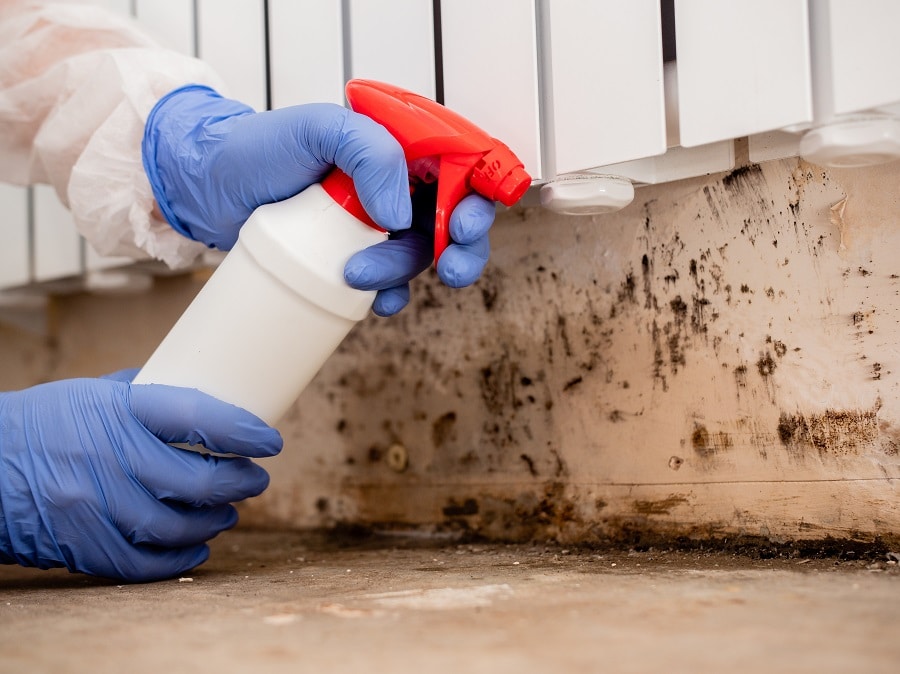What Causes Wet Rot?
Wet rot is caused by the presence of moisture in wood and other materials. It can occur when wood becomes saturated with water, which then allows decay-causing fungi to grow. The fungi feed on the starch, cellulose and lignin found in the wood, causing it to weaken and eventually break down. In some cases, this breakdown process can take as little as two weeks if conditions are right. To prevent wet rot from occurring, any source of moisture must be eliminated or reduced significantly; this includes repairing leaking pipes or gutters that may be allowing water to seep into walls or floors near wooden structures. Additionally, good ventilation should be maintained around wooden components in order to reduce dampness and discourage fungal growth.
What Causes Wet Rot?
Moisture is responsible for causing wet rot in wood and other materials: when these become soaked with water they provide an ideal environment for decay-causing fungi to flourish – feeding off starches, cellulose and lignin within the timber until weakening occurs leading ultimately to its breakdown which could happen within just two weeks under suitable circumstances. To avoid wet rot taking hold one needs to eliminate sources of moisture – so check leaky pipes & gutters etc., plus ensure adequate ventilation exists around all wooden elements in order to control humidity & inhibit fungal growth.
What Is Wet Rot?
Excess moisture leads to wet rot, a natural form of wood decay. It is distinguished from dry rot which occurs in timber with 20% or less water content. Wood affected by wet rot has a moisture level between 30-50%.
Wet rot is caused by a fungus which thrives in damp wood and nourishes itself on it, eventually leading to its destruction. The most widely occurring type of wet rot fungus is Coniophora Puteana, commonly referred to as basement fungus.
Wet rot poses lesser harm than dry rot, since it is only confined to a specific damp region and does not spread. Nonetheless, wet rot can be just as damaging and if neglected may cause serious weakening of support beams, leading to considerable structural damage.
Common Causes of Wet Rot
To effectively handle wood rot, begin by identifying the cause. Typically, excess moisture in the timber is to blame. Fungi that can deteriorate wood thrive in damp conditions; resulting in dry or wet rot damage over time. The two states of decay will only develop if ideal surroundings are present.
Wet rot spores are attracted to damp wood with a high moisture content; for it to thrive, it requires a source of water. This could be the result of various issues such as faulty plumbing, leaking gutters, damaged roofing, broken pipes, or a malfunctioning washing machine or bath/shower tray.
Excessive moisture encourages the growth of wet rot, which entails fungus spores germinating and multiplying. These feed on the wood, thereby deteriorating its structural solidity.
Any form of wood exposed to moisture is susceptible to wet rot. Potential causes include roof leaks, burst pipes, poorly connected washing machines and any other type of leak in the house.
Two species of fungi, Coniophora puteana (black) and Fibroporia Vaillantii (white), cause wet rot. Basements, bathrooms and outbuildings are vulnerable to it since they offer the perfect damp environment for its spread. Although not as hazardous as dry rot, untreated wet rot can lead to major structural damage in your house.
Wet Rot: Ideal Growing Conditions
“Wood-decaying fungus prospers in humid, oppressive atmospheres with little to no air flow. ‘How can I tell the difference between wet and dry rot?’ is one of the most frequent queries.”
The answer is straightforward: wet rot develops only in areas of high humidity.
To flourish and proliferate, wet rot demands frequent exposure to moisture. Wet rot can be identified in areas with defective plumbing, gutters, downpipes and pointing of stone. When wood is exposed to high levels of dampness for an extended period, fungal spores form leading to a loss of strength and stability which increases the probability of it shattering with resultant major structural harm.
Excessive moisture levels of over 20% can cause wet rot. Rainwater that has been allowed to pool in the wrong places is often the culprit, and faulty gutters, broken roofs or gaps in outside walls may be responsible. Taking prompt action to address these issues can help prevent wet rot from occurring. Areas with less than 20% moisture content are not susceptible to it.
Wet rot is caused by a range of elements, such as rising damp and condensation. To put it briefly, spores of wet rot can thrive in any wood that has been exposed to moisture for an extended period.
To avert potential wood rot, nip any dampness in the bud before it’s too late.
The Impact of Roof and Upper Floor Decay
Ground floor timbers are more prone to wet rot due to their proximity to damp soil and rising damp, whereas upper flooring and roof timber is less likely affected.
The most common causes of water entering upper levels of a property are: 1) Poor drainage around the exterior walls; 2) Malfunctioning or faulty gutters and downpipes; 3) Cracks in external walls; 4) Defective flashings above windows, doors and other openings.
High Levels of Rot Pose a Serious Threat
Water intrusion into a property over the long term may be caused by faulty flashing around chimneys, which may not manifest as water staining on ceilings and go unseen inside. Such infiltration can lead to rotting of timbers in the vicinity of the chimney; for this reason, it is wise to have a roofing specialist assess your roof annually.
Slipped tiles can let water in and provide the ideal environment for dry or wet rot to take hold. Taking prompt action will prevent damp issues from arising, however, if left unattended it could lead to rot.
Property owners should be attentive to wet patches or algal growth beneath gutters.
Pipes emerging from the walls of bathrooms and central heating systems must not drip. Hidden plumbing problems behind walls and beneath floors should be addressed by a plumber, and the home dried out upon discovery.
Comparing Wet and Dry Rot
Here are some distinctions between wet rot and dry rot wood-destroying fungi:
Signs of Dry Rot
Dry rot has a detrimental effect on wood, weakening its structural integrity. Even timber far from the source of moisture can be adversely affected.
Dry rot results in visible fractures along and across the grain of wood, with mycelial growth potentially observable on its surface.
When the mycelium fungus is initially formed, it appears white like cotton wool and as it matures, its colour fades to grey. It can spread further by growing through the brick walls’ mortar beds.
The fruiting bodies of dry rot create a crimson spore dust. Mould flourishes on timber that is damp with a humidity level over 20%, while dry rot spikes in wet wood when the moisture content dips below 20%.
Identifying Signs of Wet Rot
Identifying wet rot can be challenging, as it tends to thrive in dark, airless places such as cellars, lofts and roofs; also beneath floors, windows, door frames and steps. Here are some of its distinguishing features:
- The wood is stained a dark brown.
- Splitting along the grain of the wood happens longitudinally.
- A musty odour permeates the air.
- Wood that is damp to the feel.
- In the wood, a localized fungus has established itself.
- The damaged area is of a darker hue than the neighbouring wood.
- The wood has a damp, musty smell and feels spongy and squidgy.
- Prodding with a screwdriver caused the wood to quickly collapse.
- When the wood is dried, it crumbles and breaks.
- In the area affected, door and window frames are particularly prone to wood bleaching.
- Paint that is deteriorating or peeling must be attended to.
- The wood has decreased in size.
Take a knife and drive it into the painted wood; if the paint is damaged, the blade should stop after a short distance. However, if it penetrates right to the handle, this shows there is moist rot beneath the coating.
- Strands of mycelium were found on the wood.
- The fungus does not disperse.
- In the wood one finds distortion, discoloration, and a decrease in strength.
Approaching Treatment of Wet Rot
It is essential to tackle Wet rot as soon as any of the signs are noticed; if left untreated, it will worsen and potentially jeopardise the structural timber that supports your house.
Considering Treatment Options for Wet Rot
For the prevention of wet rot and to avoid further infestations, a wood specialist should take the following action: (1) identify any affected timber; (2) repair or replace deteriorated timbers; (3) treat affected areas with fungicide solutions; (4) make sure that all necessary ventilation is provided.
Identify the source of the moisture and eliminate it to identify why there is wet rot. Once removed, this should stop the fungus from growing as dampness provides nourishment for its development. Possible solutions include mending leaking roof tiles, patching faulty plumbing or replacing a cracked shower tray seal.
Assess the level of infection, identify the mould and distinguish between types of deterioration in order to discover and evaluate all areas affected.
Any timber that has been destroyed or compromised by damp rot fungus must be eliminated.
In order to protect the wood and prevent it from occurring again, repair any harm done to adjacent timber, and apply a fungicide on neighboring timbers.
Replace broken timbers with new pre-treated wood to counter wet rot after it has been taken away.
Book a Wet Rot Survey in Brighton for Damp Treatment
It’s wise to call a specialist if you are not sure what kind of wood rot you have. Our expert team of wood rot professionals can help you identify the issue and suggest the ideal solution.
Brighton Damp Treatments’ surveyors specialise in treating and eliminating wet rot issues in properties. Our team of experts will give you a permanent solution to eradicate any damp rot problems.
Certified and Trusted Professionals
Our treatments are backed by a **twenty**-year guarantee. For expert advice and to arrange an inspection of your property, please call us on **01273 920588**.



